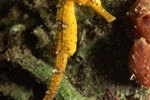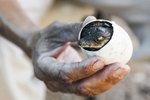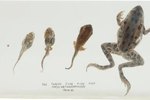
If you've ever examined an eggshell closely, you may have noticed that it is speckled with thousands of tiny little holes. This is no accident. Nature has designed eggshells this way so embryos can draw in oxygen from their environment and dispel waste such as carbon dioxide.
Reptile Eggs and Bird Eggs
Most reptiles lay eggs with calcified shells. The majority of lizards and snakes produce eggs with shells that are flexible and that are made of a protein cast that is coated with calcium carbonate crystals. Internally, reptile eggs are similar in structure to bird eggs. Inside their eggshells are two membranes with an air sac in between them. The living creature inside the egg uses the air, deleting it. Every eggshell has a network of thousands of porous holes all around the shell.
Creatures Exchange Carbon Dioxide and Oxygen
Animals need oxygen, which their metabolism converts into energy. During this conversion process, a waste gas called carbon dioxide is forming. As the creatures takes in oxygen, they need to expel the carbon dioxide. Reptiles are no exception. They need to exchange not only oxygen and carbon dioxide but also water vapor with their surrounding environment.
Babies Receive Oxygen
Animals nurtured inside their mothers' wombs receive food and oxygen directly from their mothers, who breathe in oxygen that reaches the baby through the umbilical cord. Creatures developing in eggs outside of their mothers, however, rely on air sacs and their yolks for food and oxygen. Most reptiles follow the second trajectory and hatch from eggs rather than developing within the womb and being born live.
Reptile Babies Get Oxygen Through Pores
Reptile embryos exchange necessary materials such as air, water and carbon dioxide through the thousands of pores in the eggshells. The oxygen in the air sacs gets used up and is replaced by more oxygen that seeps in from the outside through the tiny pores of the shell. Carbon dioxide is expelled through the same small holes and is exchanged for incoming oxygen in a fashion similar to the way humans breathe. Most reptiles lay their eggs in an environment that will allow the embryos to maintain a proper water balance with the outside environment.
References
- Scientific American: Porous Science: How Does a Developing Chick Breathe Inside Its Egg Shell?
- Life Science: Comparing Bird and Reptile Eggs
- Cabrillo College: Amniotic Eggs Allow Fully Terrestrial Life
- Journal of Chemical Ecology, Vol. 31: Eggshell Composition of Squamate Reptiles: Relationship Between Eggshell Permeability and Amino Acid Distribution
- University of California Museum of Paleontology: Fossil Eggshell V. Paleobiology and Eggs
Photo Credits
-
Anup Shah/Photodisc/Getty Images
Writer Bio
Brian McCracken lives in Portland, Ore., where he writes on pets and animal wildlife as well as a wide array of other topics, ranging from real estate to personal development.




